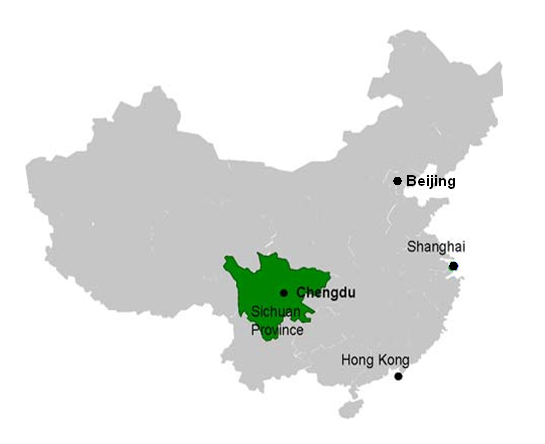Background: Chengdu’s victory over disaster
Updated: 2011-04-20 10:59
(chinadaily.com.cn)
|
|||||||||||

On May 12, 2008, a massive 8.0-magnitude earthquake struck West China’s Sichuan province. Chengdu, a beautiful, thriving city, was left in ruins. The earthquake killed 4,307 people, and injured or otherwise affected a total of 2.82 million people. Direct economic losses totaled 98.4 billion yuan.
In the three years since that devastating earthquake, 11 million Chengdu residents have come together to rebuild their city with the help of Chinese governments at all levels and their fellow countrymen.
Today, about 3,000 of 3,148 planned reconstruction projects have been completed. They include new housing, schools, roads, water systems, electricity services and telecommunications resources.
Upon the third anniversary of the deadly Wenchuan earthquake, we launch this special with focuses on Bailu town and the county-level city of Dujiangyan, both governed by Chengdu, to celebrate the success of communities in Sichuan determined to rebuild their future.
Success by the numbers
More than 600,000 inhabitants of Chengdu communities whose houses collapsed or were heavily damaged in the 2008 earthquake are today living in safer dwellings. Many houses were rebuilt, and many are new.
Chengdu’s infrastructure, including roads and brides, was heavily damaged. Since then, 280 kilometers of main lines and key arterial highways, 1,833 kilometer of rural highways and all damaged roads and bridges have been completely rehabilitated. The Chengguan High Speed Railway (Chengdu - Dujiangyan), which required an investment of 13 billion yuan, opened in May 2010. A ChengPeng High Speed Railway (Chengdu - Pengzhou) will begin service this year.
Rebuilding schools and hospitals was a priority during reconstruction. By September 2009, 169 new-built elementary and middle schools were opened. Nearly all (99.2 percent) of 237 medical and health service projects in the city have been completed.
Scientific planning
Chengdu's success relied on scientific planning and methods. More than 200 high-level planning and design institutions and more than 4,000 designers from China and abroad were invited to contribute to reconstruction plans. Plans were drawn up according to nine categories: city and town system and rural construction, housing construction, infrastructure construction, public facilities construction, productivity distribution and industrial adjustment, market service system, disaster prevention and reduction, environmental rehabilitation and land utilization. Housing plans included plans to embrace traditional culture within the framework of modern architecture.
A balanced approach
A balanced approach to post-disaster reconstruction ensured rural areas would enjoy the same quality of life improvements planned for urban areas. Optical fiber signals were sent to 593 urban and rural relocation sites to serve nearly 14,000 users. A new fiber-optic trunk is 1,772 kilometers in length.
Disaster rehabilitation work in Chengdu also invited the participation of rural and urban residents. More than 10 design concepts were made available for the victims to express their opinions and needs. In addition, the government's construction projects were fully supervised by the public.
Since 2010, Chengdu has launched the campaign of "New Homeland, New Life and New Trends" in rural areas, including Bailu town, to help villagers become more quickly accustomed to urban lifestyles.
Reviving the economy
With housing, transportation and communications systems restored, Chengdu then focused on rebuilding businesses and industries in the disaster zones. The city rebuilt 399 industrial projects, which required an investment of 11 billion yuan. The economy was restored, and today is exceeding its pre-quake strengths.
In 2010, the total output value in Chengdu reached 555.13 billion yuan, a 15 percent increase over pre-quake levels. Public budgetary revenues totaled 52.69 billion, up 36 percent. The actual utilization of foreign capital and total export import volumes in Chengdu ranked the city first among cities in China’s Midwestern and western regions. The number of world's Fortune 500 companies investing in Chengdu increased to 189, including Volkswagen, Texas Instruments, Dell, Lenovo, Foxconn, Compal and Wistron. Forbes magazine in 2010 ranked Chengdu the fastest-growing city in the world for the next decade.
Cherishing the support of others
During the past three years, Chengdu welcomed 13.7 billion yuan in outside support from Shanghai, Chongqing, Fujian and Inner Mongolia and other regions of China, as well as from the Central Government. The people of Chengdu celebrate the generosity of its neighbors that directly contributed to the completion of 380 projects, including roads, schools and hospitals.